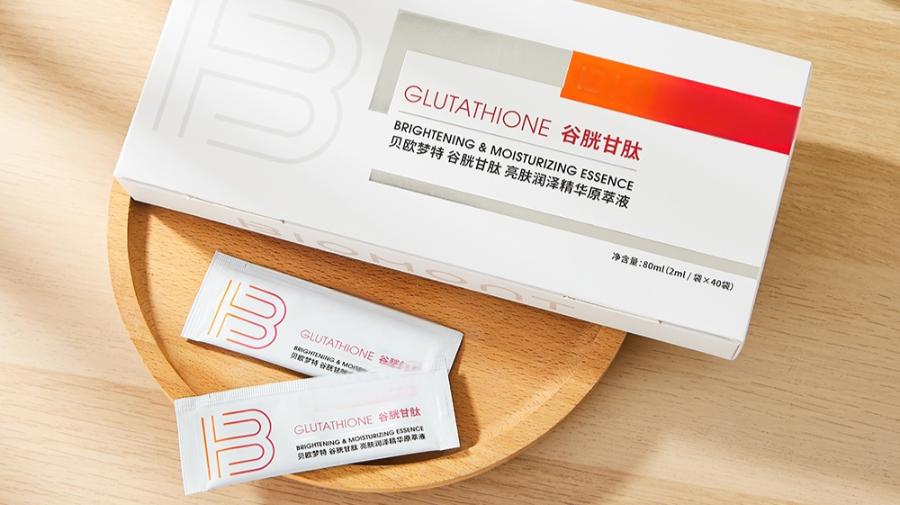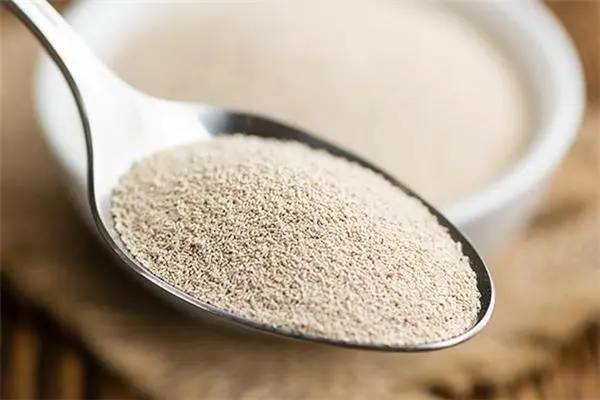Study on Effects and Clinical Application of Reduced Glutathione for Liver
Glutathione is a tripeptide containing a sulfhydryl group and a γ-amide bond, composed of glutamic acid, cysteine and glycine. It is distributed in various organs of the body and exists in the body in two forms: reduced glutathione and oxidized glutathione (GSSG). glutathione (GSSG) exists in the body. The ratio of reduced glutathione to oxidized glutathione (GSH/GSSG) is often used as an evaluation factor for cellular antioxidant capacity or cytotoxicity [1].
Reduced glutathione is the main form, accounting for about 95%. It is the co-factor of glyceraldehyde phosphate dehydrogenase and the coenzyme of phosphopyruvate dehydrogenase and glyoxalase, participating in vivo sugar metabolism and the tricarboxylic acid cycle, and can activate the activity of various enzymes such as mercapto (-SH) enzymes and coenzymes, thereby affecting the metabolism of sugars, proteins and fats in the body [2-6].
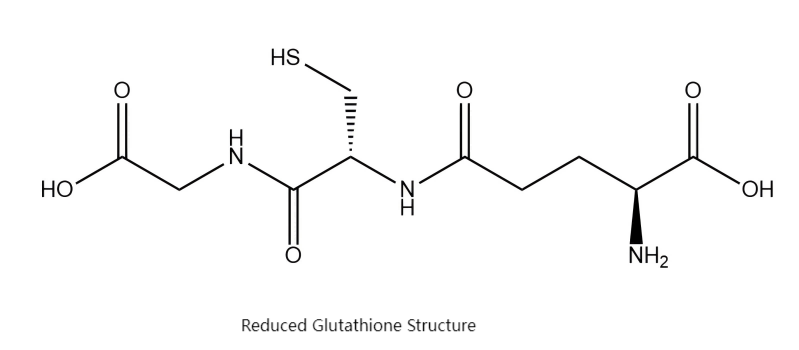
Some studies have shown that reduced glutathione can be used to prevent and treat liver and kidney damage and the recovery of cancer patients after chemotherapy. This paper reviews the application of reduced glutathione in the treatment of liver diseases by scholars at home and abroad, intending to provide a reference for future research on the treatment of glutathione in liver diseases.
1. Structure and Pharmacological Action of Glutathione
Reduced glutathione, chemically N-(N-L-γ-glutamyl-L-cysteinyl)glycine, has the molecular formula C10H17N3O6S. It is formed by the peptide bond linking the amino acids glycine, glutamic acid and cysteine. It is synthesized in the greatest quantities in the liver and is widely distributed in various tissues of the human body.
1. 1 Antioxidant Effect
Reduced glutathione has two main functional structures: the γ-glutamyl bond and the mercapto group, which have a strong ability to donate electrons or proton hydrogen [7]. It can convert reactive oxygen species such as hydroxyl radicals into inert products, thereby reducing the difficulty of metabolic removal. The resulting glutathione can be reduced to reduced glutathione by reduced coenzyme II (NADPH) [8]. Reduced glutathione reduces the level of reactive oxygen species in cells by reducing the production of reactive oxygen species and increasing the ability to remove reactive oxygen species, thereby ensuring that various cell functions can proceed normally [9-11]. Reduced glutathione can repair liver function abnormalities by scavenging free radicals and lipid peroxides and increasing the activity of antioxidant enzymes.
1. 2 Maintaining the Stability of Cell Membranes
Reduced glutathione protects cell membrane sulfhydryl proteins and enzymes from oxidation. Reduced glutathione can reduce cell membrane damage and maintain cell membrane integrity by scavenging lipid peroxides that damage cell membranes through peroxidase [12, 13]. Glycine, a degradation product of reduced glutathione, can prevent changes in cell membrane permeability, prevent changes in the regularity of substances entering and leaving, and maintain the stability of the cell membrane. Therefore, in the treatment of viral hepatitis, it can be used in combination with antiviral drugs to inhibit viral activity, reduce oxidative stress in liver cells, and protect liver cells [14].
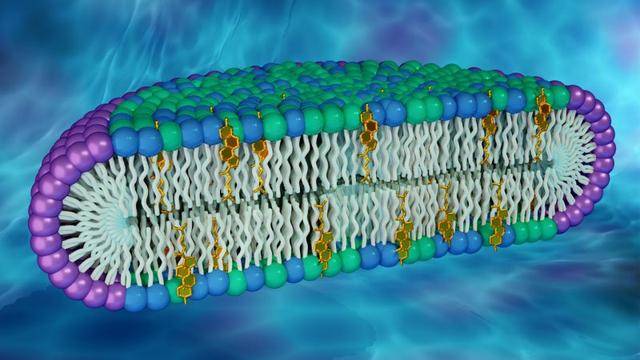
2. Clinical Application of Reduced Glutathione in the Treatment of Liver Diseases
2.1 Drug Induced Liver Injury (DILI)
Drug induced liver injury refers to liver cell necrosis, cirrhosis, and concurrent hepatitis caused by toxic damage or allergic reactions to drugs during the treatment process of various chemical drugs, traditional Chinese medicine preparations, health products, and other drugs, also known as drug-induced hepatitis.
In recent years, the incidence rate of drug-induced liver injury has been increasing year by year. In the clinic, the main treatment for drug-induced liver injury is to stop using drugs that can cause liver injury and add drugs that can protect the liver and protect the liver. Sun Yuming et al. [15] applied reduced glutathione combined with Shuganning injection to treat patients with drug-induced liver injury. The results showed that the total effective rate of combined drug treatment was 17.5% higher than that of using reduced glutathione alone. After treatment, the clinical symptoms and liver physiological indicators of patients improved, and alanine aminotransferase (ALT), alkaline phosphatase (ALP), and serum total bilirubin (TBil) all decreased significantly compared to before treatment, with statistical significance (P<0.05), and no significant adverse reactions.
Tan Huawen [16] applied reduced glutathione combined with polyene phosphatidylcholine capsules to treat drug-induced liver disease, and the results showed that serum TBil, aspartate aminotransferase (AST), ALT, ALP, gamma glutamyl transpeptidase (GGT), and total bile acids (TBA) were significantly reduced. Polyene phosphatidylcholine can promote liver cell regeneration, inhibit free radicals, and have significant anti-inflammatory effects. Combined with reduced glutathione, it can reduce liver cell damage and effectively improve the cure rate of drug-induced liver disease; Gao Jinhua [17] observed the therapeutic effect of reduced glutathione on drug-induced liver damage. 114 patients were randomly divided into two groups. The control group received treatment with vitamin C, compound glycyrrhizin, aspartic acid ornithine, etc., while the observation group received additional treatment with reduced glutathione on this basis. The results showed that compared with the control group, the total effective rate of clinical treatment increased by 15.8% after treatment, and the content of liver function indicators also showed a significant downward trend.
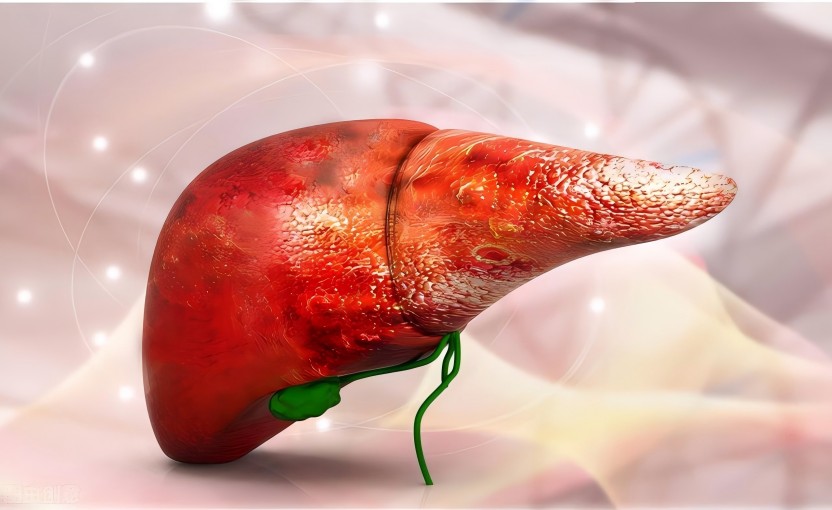
Kang Jigen et al. [18] used a combination of reduced glutathione and magnesium isoglycyrrhizinate to treat 46 patients with chemotherapy induced liver injury. The control group received reduced glutathione treatment, while the experimental group received reduced glutathione combined with magnesium isoglycyrrhizinate treatment. After treatment, both groups of patients showed a certain degree of decrease in ALT, AST, and TBil, and the liver protection treatment efficiency of the experimental group was significantly higher than that of the control group, with statistical significance (P<0.05).
Guo Xiaonan et al. [19] used magnesium isoglycyrrhizinate combined with reduced glutathione to treat drug-induced liver injury induced by oral terbinafine. The results showed that the total effective rate of the combination therapy was 93.55%, which was significantly different from the treatment with magnesium isoglycyrrhizinate alone (70.97%) and reduced glutathione (74.19%). After the combination therapy, the ALT and AST of patients decreased significantly compared to the use alone, and the difference was statistically significant (P<0.05). The use of reduced glutathione has shown significant therapeutic effects in the treatment of liver injury [20, 21]. Reduced glutathione detoxifies some exogenous toxic substances, while magnesium isoglycyrrhizinate can improve cell membrane stability and protect liver cell membranes by inhibiting NO free radical generation through anti lipid peroxidation. The combination of the two synergistically improves liver function.
2. 2 Alcoholic Liver Disease (ALD)
Alcoholic liver disease is a liver disease caused by chronic excessive alcohol consumption. It initially manifests as fatty liver disease and then progresses to alcoholic hepatitis, liver fibrosis and cirrhosis. The pathogenesis of alcoholic liver disease is mainly caused by the direct and indirect toxicity of alcohol, which leads to the release of cytokines, immune damage oxidative stress, etc., causing liver damage. Oxidative stress plays a key role in this process. Oxidative stress produces a large number of free radicals, which reduce the body's resistance to the antioxidant system, and induce apoptosis through Fas ligand, thereby causing liver damage.
Ding Binbin [22] studied the effects of reduced glutathione injections on 92 patients with alcoholic liver disease. The control group was given vitamin C, potassium magnesium aspartate and Ganlixin, while the observation group was given reduced glutathione injections in addition to the above. The results showed that the overall clinical improvement rate in the observation group was 97.83%, and in the control group, it was 80.43%. After treatment, ALT, TBil, AST and GGT all decreased significantly.
Huang Lili et al. [23] treated 48 cases of alcoholic liver disease with isomaltoside magnesium in combination with reduced glutathione. The control group was given conventional treatment + isomaltoside magnesium, and the observation group was given reduced glutathione in addition to this. The results showed that the overall effective rate of the observation group was 95.8%, and the overall effective rate of the control group was 66.7%. After treatment, TBil, ALT, and AST decreased significantly, and the difference was statistically significant (P<0.05).
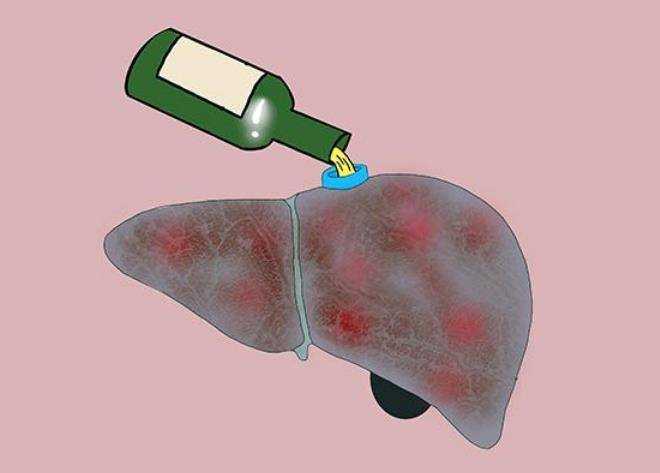
Chen Kang [24] used poly-alpha-linoleoylphosphatidylcholine combined with reduced glutathione to treat 120 alcoholic liver disease patients for 2 months. The control group was given poly-alpha-linoleoylphosphatidylcholine for treatment, and the observation group was given poly-alpha-linoleoylphosphatidylcholine combined with reduced glutathione. After treatment, the total effective rate of the observation group was higher than that of the control group, and the AST, ALT, GGT and TBil of the observation group were significantly lower than those of the control group, and the difference was statistically significant (P<0.05).
Zhao Jiahai [25] used reduced glutathione in combination with compound glycyrrhizinate to treat patients with alcoholic liver disease, with a total effective rate of 94% and significant improvement in liver glycyrrhizin has anti-inflammatory, virus-inactivating, and immune-modulating effects, while reduced glutathione has the function of scavenging superoxide ions and other free radicals. It increases bile acid metabolism by transferring methyl groups and ethyl groups, promotes the absorption of fat and fat-soluble vitamins in the gastrointestinal tract, accelerates the excretion of free radicals, and reduces damage to liver cells [26]. The two
2.3 Viral Hepatitis
Viral hepatitis is a disease of liver damage caused by infection with different types of hepatotropic viruses and is highly infectious. After onset, patients may develop liver inflammation, which can be classified as acute hepatitis, chronic hepatitis, or severe hepatitis as the disease progresses. In severe cases, it can lead to hepatic coma or liver failure. The pathogenic mechanism of viral hepatitis is mainly caused by viral infection and reduced autoimmune capacity.
Many studies have shown [27-29] that adding reduced glutathione to the conventional treatment can effectively improve the overall treatment efficacy in patients with viral hepatitis. Compared with conventional treatment, the combined treatment reduced the patient's TBA, AST, ALT, and TBil values, and the difference was statistically significant (P<0.05). Clinical symptoms such as nausea and vomiting, abdominal distension, and loss of appetite were relieved to varying degrees. Deng Hongju [30] used diammonium glycyrrhizinate in combination with reduced glutathione to treat patients with hepatitis A virus. The results showed that after combined treatment, the patient's ALT, TBil, and AST were all reduced.
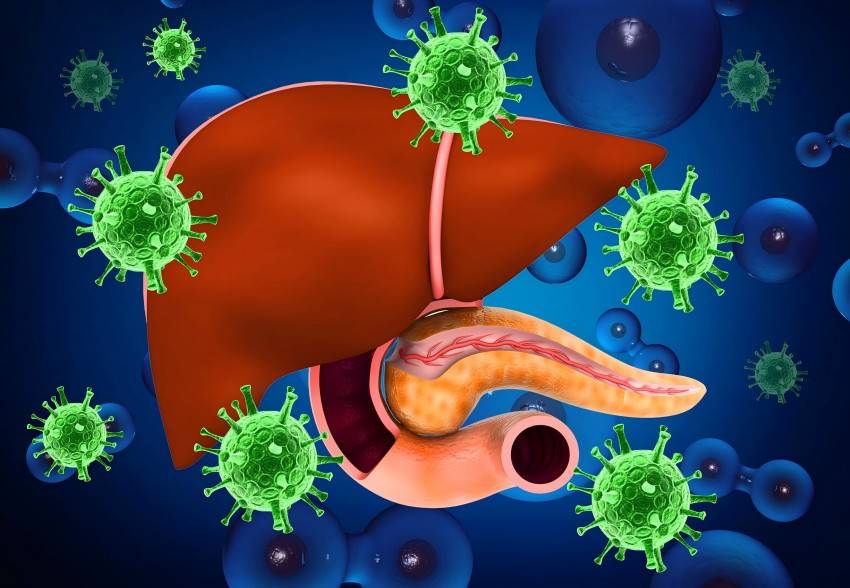
Li Jiao [31] analyzed the combined use of diammonium glycyrrhizinate and reduced glutathione in the treatment of hepatitis B patients. The results showed that the combination of the two significantly reduced ALT, TBA, and TBil compared to the use of diammonium glycyrrhizinate alone, and significantly improved clinical efficacy. Diammonium glycyrrhizinate has antioxidant, anti-infective, and liver-protective effects, and can inhibit liver fibrosis, liver cell necrosis, and other phenomena. When used in combination with reduced glutathione, it improves treatment effects and reduces recurrence rates and adverse reactions. Some scholars [32, 33] have explored the use of lamivudine in combination with reduced glutathione to treat patients with hepatitis B virus infection. The results showed that the combination of the two can reduce the levels of TBil, transforming growth factor-β1, hyaluronidase, etc., and has a good effect on improving liver function.
Liu Hongming [34] investigated the treatment of pregnant women with viral hepatitis with Danshen injection combined with reduced glutathione and showed that the combination treatment improved clinical symptoms such as fatigue, loose stools, abdominal distension, and liver pain in patients, and no significant adverse reactions occurred during treatment. Yuan Xuehua et al. [35] investigated the use of combined treatment with polyene phosphatidylcholine and reduced glutathione in pregnant patients with chronic hepatitis B in the middle and late stages. The results showed that the combined treatment had a significantly higher overall treatment efficacy than the control group (which used adenosine triphosphate, coenzyme A, and creatinine), and that the levels of ALT, TBil, and AST were significantly reduced.
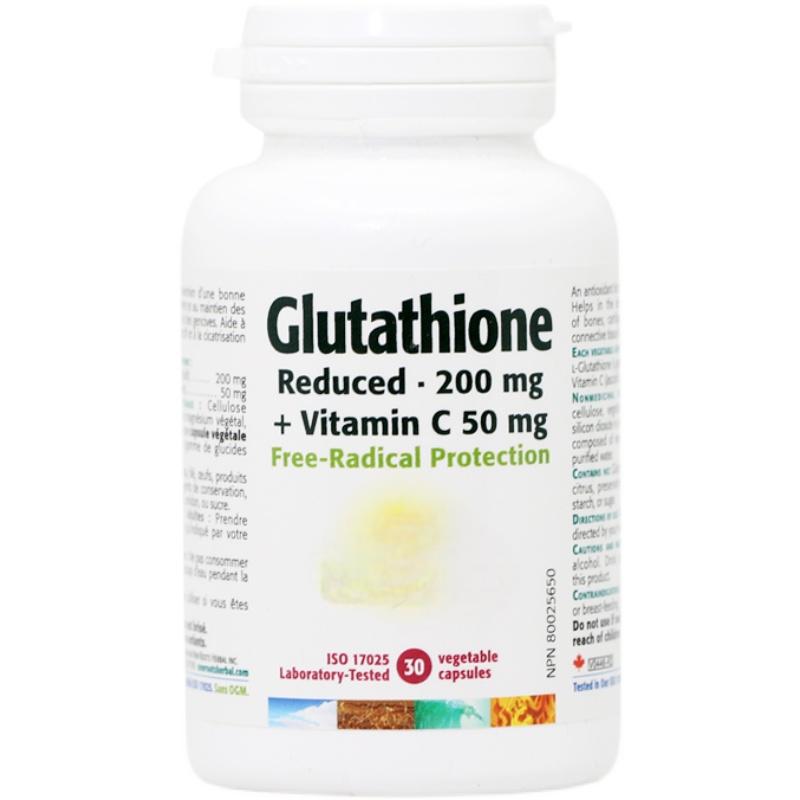
3. Summary
Reduced glutathione is an important regulator of cellular metabolism and an antioxidant. It has the effect of scavenging harmful free radicals and peroxides in the human body, reducing oxidative stress in the body, and promoting detoxification and immunity regulation. It is widely used in the treatment and adjuvant treatment of liver, pancreatic, renal and other diseases. With the continuous research on reduced glutathione, its scope of application is also constantly expanding, but the mechanism of action still needs to be further studied.
References:
[1] Xie Yaqing, Liang Xiaomei, Ye Weixia. Research progress on the pharmacological effects and clinical application of reduced glutathione. China Pharmaceutical Industry, 2013, 22(7):124-127.
[2] Ding Lan. Progress in the clinical application of reduced glutathione in the treatment of liver disease // Proceedings of the 14th National Academic Conference on Infectious Diseases, 2012: 307-309.
[3] Wang Xiaowei, Zhang Hongyan, Liu Rui, et al. Research progress of glutathione. Chinese Journal of Pharmaceutical Sciences (Online Edition), 2019, 17(4):141-148.
[4] Lv H, Zhen C, Liu J, et al. Unraveling the potential role of glutathione in multiple forms of cell death in cancer therapy. Oxid Med Cell Longev, 2019(2019):1-16.
[5] Nie R, Wang MY, Liao TT, et al. Assisted conception does not increase the risk for mother-to-child transmission of hepatitis B virus, compared with natural conception: a prospective cohort study. Fertility and Sterility: Official Journal of the American Fertility Society, Pacific Coast Fertility Society, and the Canadian Fertility and Andrology Society, 2019, 111(2):348-356.
[6] Liu Yajuan, Li Xuesong, Li Qinyuan, et al. Research progress on the treatment of immune-related diseases with reduced glutathione. Journal of Practical Clinical Medicine, 2016, 20(17):205-208.
[7] Zhang Y, Ye S. Physiological functions of reduced glutathione and its clinical applications. Chemistry of Life, 2020, 40(12):2226-2235.
[8] Huang C W, Fei Y K, Zhu M M, et al. The important role of glutathione in stem cell “stemness” and regulation. Chinese Tissue Engineering Research, 2022, 26(7):1119-1124.
[9] Dong Z, Patel Y, Saikumar P, et al. Development of porous defects in plasma membranes of adenosine triphosphate-depleted Madin- Darby canine kidney cells and its inhibition by glycine. Lab Invest, 1998, 78(6):657-668.
[10] Wu G, Fang YZ, Yang S, et al. Glutathione metabolism and its implications for health. J Nutr, 2004, 134(3):489-492.
[11] Townsend DM, Tew KD, Tapiero H. The importance of glutathione in human disease. Biomed Pharmacother, 2003, 57(3-4):145-155.
[12] Yuan P, Zhang D. Mechanism of action and clinical application of reduced glutathione. Drug Evaluation, 2006, 3(5):385-390.
[13] Ma Sen. Research progress of glutathione peroxidase and glutathione transferase. Advances in Animal Medicine, 2008(10):53-56.
[14] Hu Jiu-jin. The effect of reduced glutathione on liver function in patients with chronic hepatitis. Contemporary Medicine, 2020, 26(1):160-162.
[15] Sun Yuming, Zhang Bangjie. Clinical study on the treatment of drug-induced liver injury with Shuganning injection combined with reduced glutathione. Journal of Integrated Traditional and Western Medicine for Liver Diseases, 2019, 29(6):516- 519.
[16] Tan H. Clinical efficacy of combined treatment with polyene phosphatidylcholine capsules and reduced glutathione in patients with drug-induced liver disease. Chinese Journal of Pharmaceutical Economics, 2021, 16(6):98-100, 104.
[17] Gao Jinhua. Exploring the clinical efficacy of reduced glutathione in the treatment of drug-induced liver damage. Haixia Pharmacy, 2018, 30(2):99-100.
[18] Kang Jigen, Hu Bo, Yang Jiamei. Efficacy observation of magnesium isoglycinate combined with reduced glutathione in the treatment of chemotherapy-related liver injury. Oncology Basic and Clinical, 2020, 33(2): 156-158.
[19] Guo Xiaonan, Tang Chunlei, Li Mu. Clinical efficacy of magnesium isoglycyrrhizinate combined with reduced glutathione in the treatment of drug-induced liver injury caused by oral terbinafine. Chinese Modern Doctor, 2021, 59(20):28-31.
[20] Zhao D, Niu H, Yu T, et al. Efficacy evaluation of dexamethasone acetate prednisone tablets combined with reduced glutathione in the treatment of hyperbilirubinemia combined with acute drug-induced liver injury. Chinese Medicine and Clinical Practice, 2022, 22(3):252-254.
[21] Xiao Lu, Hu Xian, Cai Yingke, et al. A study of the efficacy of adenosylmethionine combined with reduced glutathione in the treatment of patients with drug-induced liver injury. Journal of Practical Hepatology, 2022, 25(1): 66-69.
[22] Ding Binbin. Efficacy and safety of reduced glutathione (GSH) injections for alcoholic liver disease. Contemporary Medicine, 2020, 26(9):54-56.
[23] Huang Lili, Gao Yang, Zheng Rongrong. Efficacy observation of isoglycyrrhizinate magnesium combined with reduced glutathione in the treatment of alcoholic liver disease. Northern Pharmacy , 2018, 15(3):49.
[24]Chen Kang . The effect of combined administration of polyene phosphatidylcholine and reduced glutathione on liver function in patients with alcoholic liver disease. Chinese Prescription Drugs , 2019, 17(11):80-81.
[25] Zhao J. Clinical efficacy analysis of reduced glutathione combined with compound glycyrrhizinate in the treatment of alcoholic liver disease. China Medical Guide, 2019, 17(34):66-67.
[26] Huang Xiaohong. Compound glycyrrhizic acid glycoside combined with reduced glutathione for the treat


 English
English French
French Spanish
Spanish Russian
Russian Korean
Korean Japanese
Japanese